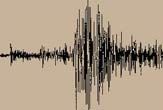Earthquake Deaths Down in 2006

Earthquakes killed 6,604 people worldwide in 2006, down significantly from the previous two years in a stark shift that illustrates the capricious nature of these deadly events.
Some 5,749 of the fatalities for 2006 were the result of a magnitude 6.3 earthquake in Java, Indonesia on May 26.
The death toll in other recent years:
- 2005: 89,354
- 2004: About 284,000 (largely due to the quake-induced Indonesian tsunami)
- 2003: 33,819
- 2002, 1,711
The figures come from the U.S. Geological Survey and and the United Nations Office for Coordination of Humanitarian Affairs.
Nearly 70 earthquakes are recorded every day around the world by the USGS. Millions more each year go undetected because they are very small or occur in remote locations. On average, there are 17 major earthquakes (magnitude 7.0 to 7.9) and one great earthquake (8.0 or higher) each year worldwide. In fact, each year since 2000 has seen one great temblor except for 2002, when there was none, and 2004 when there were two.
Asked frequently by the public whether there are more earthquakes lately, the USGS continually states that this is not the case, and the agency's data clearly shows no increase over time in temblors that are large enough to be potentially dangerous. More very small quakes are recorded now compared to decades past because seismographs are more prevalent.
Also, media coverage of disasters couple with the fact that more people live in disaster-prone regions combine to make Mother Nature seem nastier nowadays.
Sign up for the Live Science daily newsletter now
Get the world’s most fascinating discoveries delivered straight to your inbox.
Even the worst years in recent memory are nothing like 1556. On Jan. 23 that year, an earthquake thought to have been magnitude-8 killed an estimated 830,000 people in Shansi, China. The deadliest U.S. earthquake in history struck San Francisco on April 18, 1906. The magnitude 7.8 quake killed about 3,000 people, but many of the deaths were attributed to fires that ravaged the city.
The first great quake of 2007 already struck—an 8.2 event hit off the coast of Japan on Jan. 13. Tsunami warnings were issued but only minor waves were recorded.
- Top 10 Unexplained Phenomena
- Natural Disasters: Top 10 US Threats
- Central U.S. Warned of Larger Earthquakes to Come
- Images: Deadly Earthquakes Past and Present
- All About Earthquakes
Most Popular


